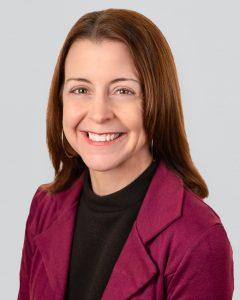FOCUS
ONLINE EXCLUSIVE: Do alternatively certified teachers need different supports?
By Suzanne Bouffard
Categories: Career pathways, Implementation, Learning designs, Learning systems/planning, Mentoring & inductionAugust 2022
Read the remaining content with membership access. Join or log in below to continue.
Sed ut perspiciatis unde omnis iste natus error sit voluptatem accusantium doloremque laudantium, totam rem aperiam, eaque ipsa quae ab illo inventore veritatis et quasi architecto beatae vitae dicta sunt explicabo. Nemo enim ipsam voluptatem quia voluptas sit aspernatur aut odit aut fugit, sed quia consequuntur magni dolores eos qui ratione voluptatem sequi nesciunt. Neque porro quisquam est, qui dolorem ipsum quia dolor sit amet, consectetur, adipisci velit, sed quia non numquam eius modi tempora incidunt ut labore et dolore magnam aliquam quaerat voluptatem.
References
Diliberti, M.K. & Schwartz, H.L. (2022). Districts continue to struggle with staffing, political polarization, and unfinished instruction. RAND Corporation. www.rand.org/pubs/research_reports/RRA956-13.html
Howarth, R. & Stifler, L. (2019, March). The failings of online for-profit colleges: Findings from student borrower focus groups. The Brookings Institution. www.brookings.edu/wp-content/uploads/2019/03/The-Failings-of-Online-For-profit-Colleges.pdf
Huguet, A., Doss, C.J., Master, B.K., Unlu, F., Sousa, J.L., Christianson, K., & Baker, G. (2021). Widening the pathway: Implementation and impacts of alternative teacher preparation programs across three contexts. RAND Corporation. www.rand.org/pubs/research_reports/RRA281-1.html
King, J.E. & Yin, J. (2022). The alternative teacher certification sector outside higher education. 2022 update. Center for American Progress & American Association of Colleges of Teacher Education. www.americanprogress.org/wp-content/uploads/2022/06/AltCertification-report_CX.pdf
Markowitz, N.L. & Bouffard, S.M. (2020). Teaching with a social, emotional, and cultural lens: A framework for educators and teacher educators. Harvard Education Press.
National Center for Education Statistics. (2022). Characteristics of public school teachers who completed alternative route to certification programs. U.S. Department of Education, Institute of Education Sciences. nces.ed.gov/programs/coe/indicator/tlc
National Education Association. (2020, April). Alternative routes to certification: State-by-state analysis. Author. www.nea.org/sites/default/files/2021-04/Alternative%20Paths%20Report-Final%20Apr2020.pdf
Redding, C. & Smith, T.M. (2016, August). Easy in, easy out: Are alternatively certified teachers turning over at increased rates? American Educational Research Journal, 53(4), 1086-1125. doi.org/10.3102/0002831216653206
Richter, E., Lucksnat, C., Redding, C., & Richter, D. (2022, June). Retention intention and job satisfaction of alternatively certified teachers in their first year of teaching. Teaching and Teacher Education, 114. doi.org/10.1016/j.tate.2022.103704
Rose, A.L. & Sughrue, J.A. (2020, March 19). Promoting retention of alternative certified teachers through professional development. NASSP Bulletin, 104(1), 34-54. doi:10.1177/0192636520913624
Schaeffer, K. (2021, December 10). America’s public school teachers are far less racially and ethnically diverse than their students. Pew Research Center. www.pewresearch.org/fact-tank/2021/12/10/americas-public-school-teachers-are-far-less-racially-and-ethnically-diverse-than-their-students/

Suzanne Bouffard is senior vice president of communications and publications at Learning Forward. She is the editor of The Learning Professional, Learning Forward’s flagship publication. She also contributes to the Learning Forward blog and webinars. With a background in child development, she has a passion for making research and best practices accessible to educators, policymakers, and families. She has written for many national publications including The New York Times and the Atlantic, and previously worked as a writer and researcher at the Harvard Graduate School of Education. She has a Ph.D. in developmental psychology from Duke University and a B.A. from Wesleyan University. She loves working with authors to help them develop their ideas and voices for publication.
Categories: Career pathways, Implementation, Learning designs, Learning systems/planning, Mentoring & induction
Recent Issues
NAVIGATING NEW ROLES
April 2025
Whether you’re new to your role or supporting others who are new,...
LEARNING DESIGNS
February 2025
How we learn influences what we learn. This issue shares essential...
BUILDING BRIDGES
December 2024
Students benefit when educators bridge the continuum of professional...
CURRICULUM-BASED PROFESSIONAL LEARNING
October 2024
High-quality curriculum requires skilled educators to put it into...











